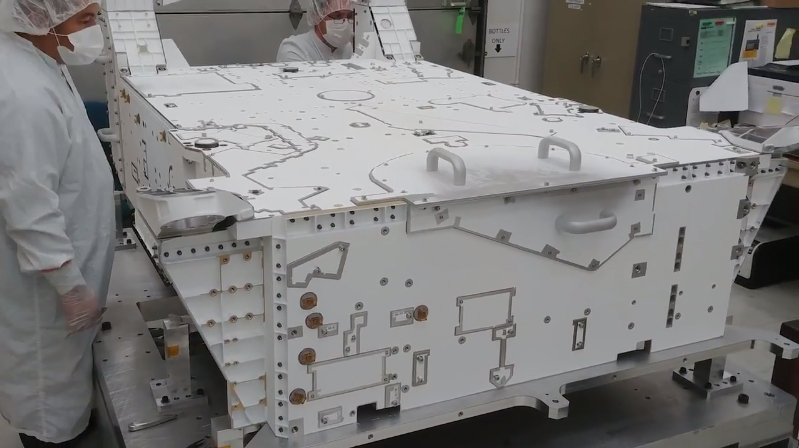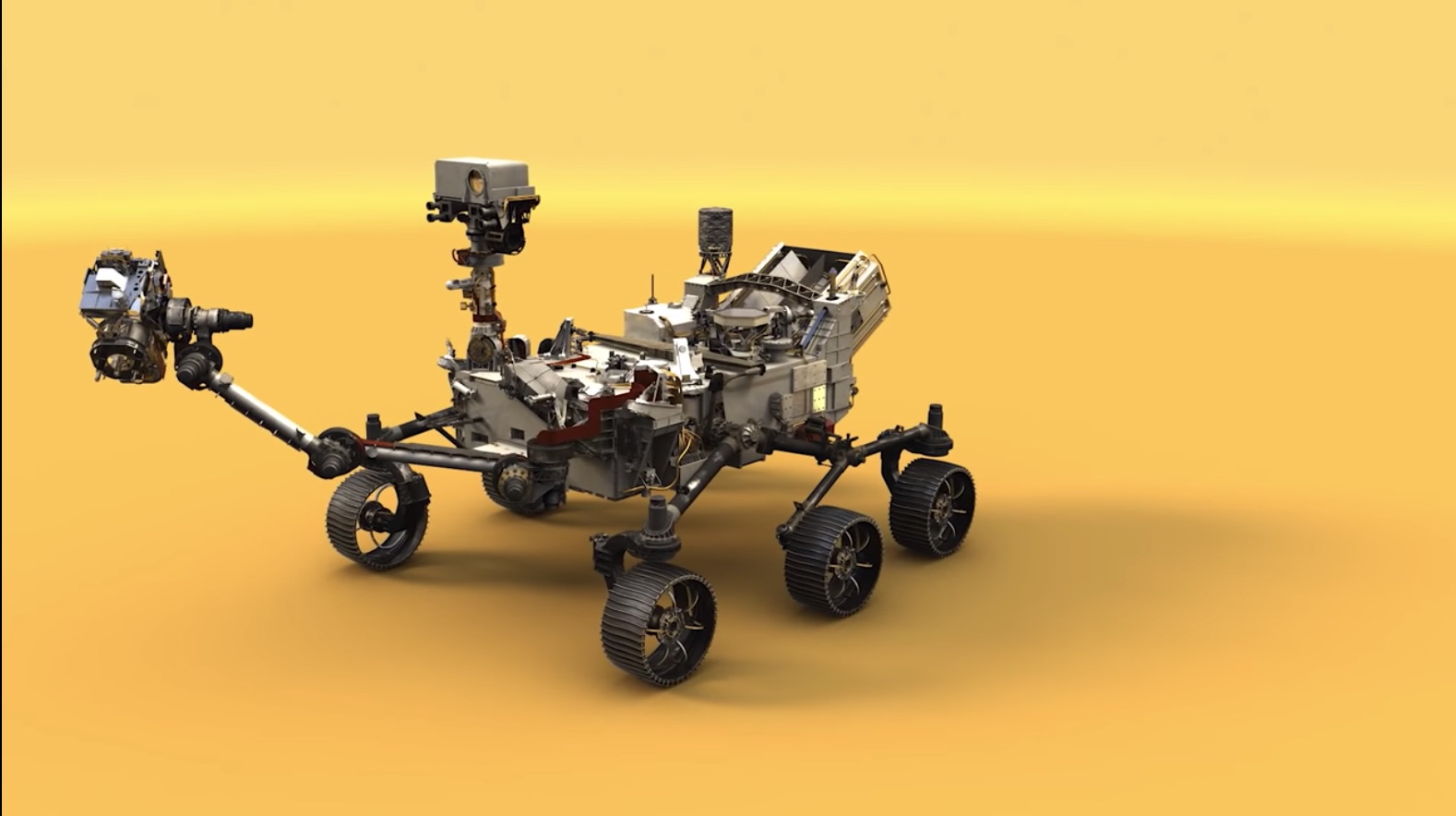NASA's Mars 2020 Rover Is Unique. And So Is Its Paint Job.
Before NASA's Mars 2020 mission is ready to launch toward the Red Planet, the agency has to paint the new rover — a task more challenging than it sounds.
While a paint job may sound like an insignificant task, both the formulation and the process of painting a spacecraft like this have to be precise. And each spacecraft is unique.
"Like just about everything else we work on, there is only one Mars 2020 rover. We had to get everything as close to perfect as we can get it," John Campanella, who has been painting spacecraft for NASA's Jet Propulsion Laboratory for more than 20 years, said in a statement from NASA, which includes a video of the process. [How NASA's Mars 2020 Rover Will Work (Infographic)]

In August 2018, engineers working on the rover's chassis (the frame of the spacecraft) started the first step in the painting process: taping. Parts of the rover must never be painted, such as places where electronics boxes will eventually go and where wiring harnesses and attachment points for hypersensitive science instruments that require bare metal surfaces will be placed. So the paint team first expertly and precisely tapes the spacecraft, so that no paint ends up where it's not supposed to be, but also so that no space that is supposed to be painted is left bare.
"You can find the masking tape we used on 2020 in just about any hardware store," Ryan van Schilifgaarde, a support engineer for Mars 2020 assembly, said in the statement. "But whereas you would probably tear off a strip with your hands and eyeball it onto the wall you wanted to paint in your house, we use a computer-controlled cutter to make sure each piece is exactly the size and shape we want it to be."
Once all of the tape is placed, the next step is sanding the spacecraft. Using sandpaper to scuff the shiny metal surface helps the paint adhere better, but sanding also creates metal dust, which needs to be cleaned off before the rover can move on to the painting stage. In order to prevent corrosion or oxidation (essentially, rust), the whole job — from sanding to washing to priming to painting — needs to be done in 6 hours.
Campanella and his team were racing against the clock on the Mars 2020 rover; just sanding and washing it took 2 of the 6 hours. Once it was cleaned up, the members of the paint team were able to start their job.
Get the Space.com Newsletter
Breaking space news, the latest updates on rocket launches, skywatching events and more!
While the masking tape used on the rover is your standard variety, the paints are definitely not: "Along with being able to adhere to aluminum, they have been proven through rigorous testing to be able to endure the jolts, vibrations, UV rays and other indignities of a trip to Mars, as well as be [hardy] enough to survive the Martian cold," NASA officials said in the statement. The paint is also specially formulated to reduce the possibility that it'll release chemical gases that could compromise the rover's science experiments.
Campanella and the other painters took only 10 minutes to spray on the first layer of white paint, according to NASA. Then, they doubled back for a second layer and then a third. From the first scrape of sandpaper, the whole job took less than 5 hours.

After the frame of the rover is painted, the job still isn't done. The chassis then has to be "baked" at 230 degrees Fahrenheit (110 degrees Celsius) in a vacuum in order to both harden the paint and to bake out any chemicals that could potentially turn to gas and release during the journey. This step is especially important for Mars 2020, because the rover will be collecting rock samples from Mars, and it's important that chemicals from the rover don't contaminate the samples.
Once the rover returned from the oven, it was wrapped in sterile, anti-static film and taken to NASA's clean room (a sterile environment) for final touches and inspection. Two weeks later, the completed frame was gently carried on a forklift and proceeded at a stately 3 mph to JPL's Spacecraft Assembly Facility High Bay 1, where it will sit with other stages of the mission until the whole thing is ready to be launched in July 2020.
Follow Kasandra Brabaw on Twitter @KassieBrabaw. Follow us @Spacedotcom, Facebook and Google+. Original article on Space.com.
Join our Space Forums to keep talking space on the latest missions, night sky and more! And if you have a news tip, correction or comment, let us know at: community@space.com.

Kasandra Brabaw is a freelance science writer who covers space, health, and psychology. She's been writing for Space.com since 2014, covering NASA events, sci-fi entertainment, and space news. In addition to Space.com, Kasandra has written for Prevention, Women's Health, SELF, and other health publications. She has also worked with academics to edit books written for popular audiences.









